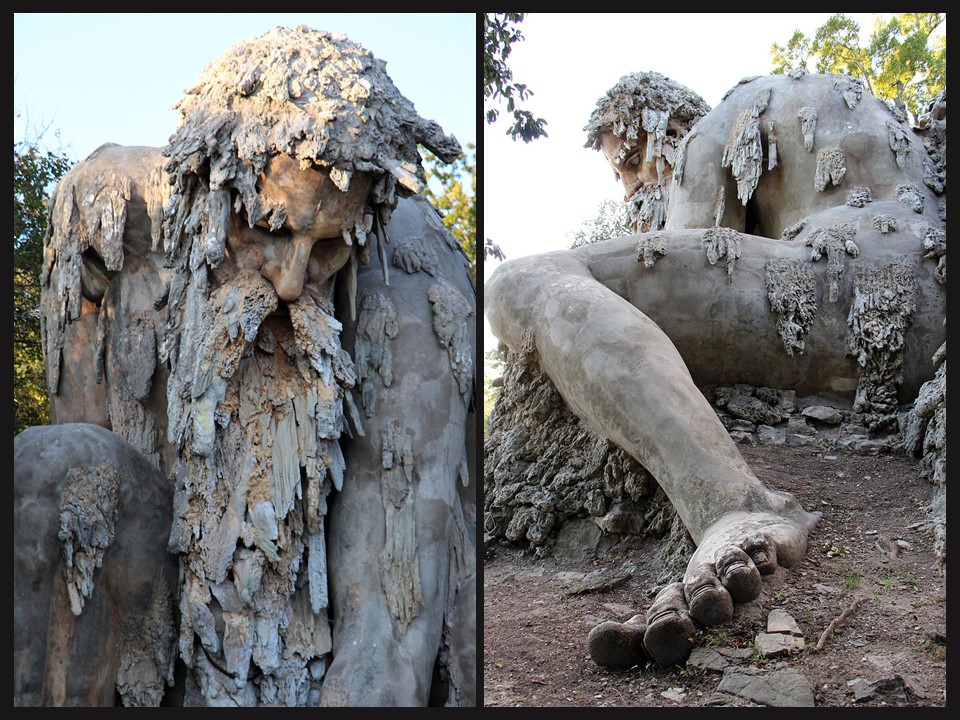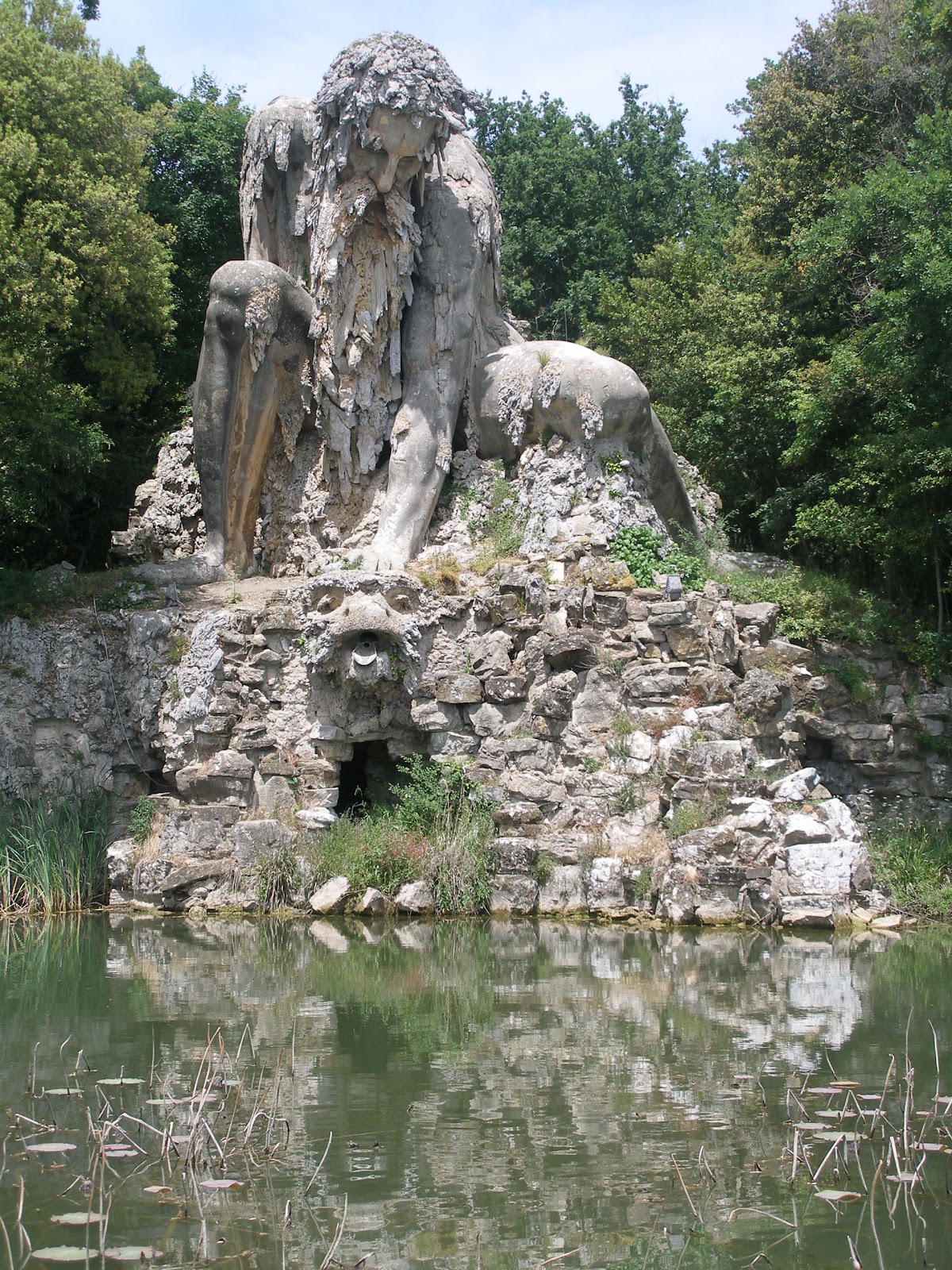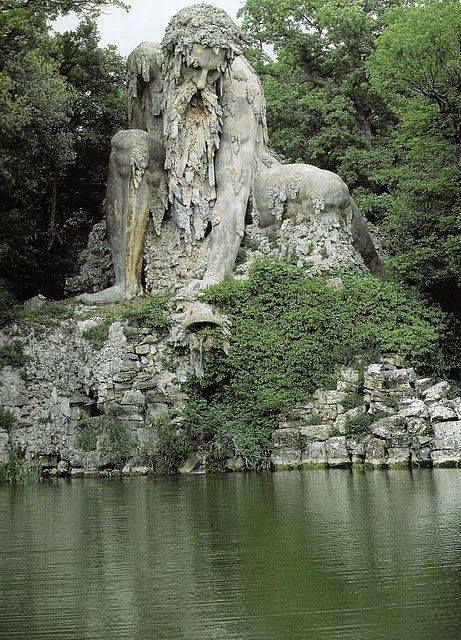Nestled within the picturesque landscape of Tuscany, the Colosso dell’Appennino stands as a remarkable testament to the creative brilliance of the Renaissance period. This colossal stone statue, reaching an impressive height of approximately 14 meters, was commissioned in the 1580s by the Grand Duke of Tuscany, Francesco de’ Medici, and brought to life by the skilled hands of the Flemish sculptor Jean de Boulogne, better known as Giambologna.
The Colosso dell’Appennino was originally situated on the grounds of the Villa di Pratolino, a grand estate constructed about two decades earlier by the renowned architect Bernardo Buontalenti. The sculpture was intended to serve as a personification of the majestic Apennine mountain range, which runs along the spine of the Italian peninsula.

A Masterful Blend of Art and Nature
Giambologna’s masterpiece is a true marvel of artistic and engineering prowess. The colossus is depicted as an elderly, crouching figure, surrounded by a rich tapestry of mythological characters drawn from Ovid’s Metamorphoses. These include the winged horse Pegasus, the mountain of Parnassus, and the mighty Jupiter, among others. The sculptor’s attention to detail is evident in the intricate carved figures and the overall impression of the sculpture blending seamlessly with the natural landscape.
The statue is not merely a static representation, but a living, dynamic work of art. Designed to “sweat” and “cry,” the Colosso dell’Appennino was equipped with a complex network of conduits that allowed water to flow from various parts of the figure, creating a mesmerizing display of natural elements. In the winter months, the colossal form would become draped in a shimmering mantle of icicles, earning it the affectionate nickname “il Gennaio” (the January), a testament to its representation of the changing seasons and the cycle of life.
The Rise and Fall of the Pratolino Estate
The Colosso dell’Appennino and the Villa di Pratolino were integral parts of a grand, ambitious project envisioned by Francesco de’ Medici. The villa and its surrounding gardens were designed to be a retreat for the Grand Duke, a place where he could indulge in his love of natural wonders and alchemical experiments. However, the estate’s fortunes took a turn after the deaths of Francesco and his wife, Bianca Capello, in 1587.

Following a period of abandonment, the Villa di Pratolino was ultimately demolished in 1822. The Colosso dell’Appennino, however, managed to survive this tumultuous period, and in 1872, the land was acquired by the Demidoff family, who constructed their own villa on the site. In 1981, the Province of Florence finally took ownership of the estate, opening it to the public and ensuring the preservation of this remarkable Renaissance masterpiece.
Enduring Legacy and Ongoing Restoration
The Colosso dell’Appennino continues to captivate and inspire visitors to this day. Over the centuries, the sculpture has undergone various modifications and restorations, including the addition of a dragon statue in 1690 and a comprehensive restoration led by Rinaldo Barbetti in 1876. Despite these changes, the essence of Giambologna’s original vision remains intact, and the colossus stands as a testament to the enduring power of art and human ingenuity.
As the Colosso dell’Appennino enters its fifth century, ongoing efforts are dedicated to preserving and maintaining this remarkable cultural treasure. Visitors to the Villa Demidoff grounds can still marvel at the colossal figure, lost in the interplay of stone, water, and the grandeur of the surrounding Apennine mountains – a true masterpiece of the Renaissance era that continues to captivate and inspire generations to come.
